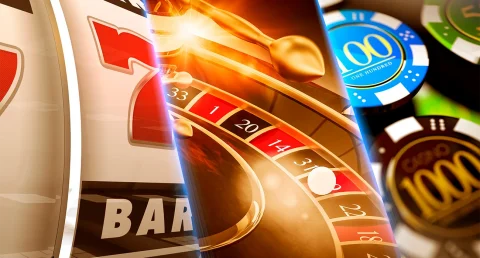



Slot machines are not just random machines that dispense winnings; they are carefully designed to manipulate our behavior and keep us playing. The psychology behind slot machine design is rooted in the principles of operant conditioning, which is the process by which behavior is modified through the use of rewards and punishments. In this section, we'll explore how the principles of operant conditioning are used in slot machine design to keep players engaged and coming back for more.
Operant conditioning is a process of learning in which behavior is modified through the use of rewards and punishments. In the context of slot machines, the rewards are the payouts, while the punishments are the losses. The frequency and magnitude of these rewards and punishments are carefully calibrated to maximize player engagement and keep them playing for as long as possible. One of the key principles of operant conditioning is the variable ratio schedule, which is a schedule of reinforcement in which rewards are given after a variable number of responses. This principle is used in free slots machines by giving players payouts at random intervals. Players never know when the next payout will come, which keeps them engaged and playing for longer. Another principle of operant conditioning is the use of extinction, which is the gradual disappearance of a behavior when it is no longer reinforced. In slot machines, this principle is used by giving players occasional payouts to keep them engaged, but gradually reducing the frequency of payouts over time. This creates a sense of anticipation and keeps players playing in the hopes of hitting the next big payout. Finally, operant conditioning also involves the use of shaping, which is the gradual process of reinforcing behaviors that are closer and closer to the desired behavior. In slot machines, this principle is used by giving players small payouts for near misses, which are spins that come close to hitting the jackpot but fall just short. This reinforces the behavior of playing and keeps players engaged for longer.
In addition to the principles of operant conditioning, slot machine design also relies heavily on the use of sound and music to create a sensory experience that is both engaging and immersive. The sound effects used in slot machines are carefully designed to create a sense of excitement and anticipation, while the music is often upbeat and energetic to keep players engaged and alert. One of the key sound effects used in slot machines is the "winning" sound, which is played when a player hits a payout. This sound is often accompanied by flashing lights and other visual cues, which create a sense of excitement and anticipation. The sound of the coins falling into the payout tray is also a key part of the sensory experience, as it creates a sense of satisfaction and accomplishment. In addition to the winning sound, slot machines also use a variety of other sound effects to keep players engaged. For example, the sound of the reels spinning and the sound of the buttons being pushed are both designed to create a sense of excitement and anticipation. The use of sound effects is carefully calibrated to create a sensory experience that is both engaging and immersive.
In addition to sound and music, slot machine design also relies heavily on the use of visual cues and graphics to create a sensory experience that is both engaging and immersive. The graphics used in slot machines are often bright and colorful, with flashing lights and other visual cues to create a sense of excitement and anticipation. One of the key visual cues used in slot machines is the paytable, which shows the payouts for each winning combination. The paytable is often displayed prominently on the machine, so players can easily see the potential payouts and know what they are playing for. In addition to the paytable, slot machines also use a variety of other visual cues to keep players engaged. For example, the use of themed graphics and symbols is often used to create a sense of immersion and excitement. The graphics are carefully designed to create a sense of anticipation and excitement, which keeps players engaged and coming back for more.
One of the key ways that slot machine design affects player behavior is through the use of near misses. A near miss is a spin that comes close to hitting the jackpot but falls just short. These near misses are designed to create a sense of excitement and anticipation, which keeps players engaged and playing for longer. The use of near misses is a form of shaping, which is the gradual process of reinforcing behaviors that are closer and closer to the desired behavior. In the context of slot machines, near misses reinforce the behavior of playing and keep players engaged for longer. Players are more likely to continue playing if they feel like they are close to hitting a big payout, even if the odds are against them. While near misses can be exciting and engaging, they can also be dangerous for players who are prone to compulsive gambling. Players who become obsessed with hitting the next big payout can quickly spiral out of control and lose large amounts of money.
Slot machine design affects player behavior in a variety of ways, from the use of operant conditioning principles to the use of sound, music, and visual cues. By understanding how these design elements are used to manipulate player behavior, players can make more informed decisions when playing and hopefully avoid falling into the trap of compulsive gambling. One of the key ways that slot machine design affects player behavior is through the use of variable rewards. Players never know when the next payout will come, which keeps them engaged and playing for longer. The use of near misses and small payouts for close calls also reinforces the behavior of playing and keeps players engaged for longer. In addition to the use of operant conditioning principles, slot machine design also relies heavily on the use of sound, music, and visual cues to create a sensory experience that is engaging and immersive. The sound effects and music are carefully designed to create a sense of excitement and anticipation, while the graphics and visual cues are designed to create a sense of immersion and excitement.
While slot machines can be a fun and engaging form of entertainment, they can also be dangerous for players who are prone to compulsive gambling. To promote responsible gambling, slot machine designers and operators need to be aware of the potential risks and take steps to minimize the harm that can be caused by these machines. One way to promote responsible gambling is to limit the amount of time and money that players can spend on slot machines. Many casinos have implemented time and money limits to help prevent compulsive gambling and promote responsible gambling. Another way to promote responsible gambling is to provide players with information about the odds of winning and the potential risks of gambling. This information can help players make more informed decisions when playing slot machines and avoid falling into the trap of compulsive gambling.
As technology continues to evolve, slot machine design is likely to become even more sophisticated and engaging. One trend that is likely to become more prevalent is the use of virtual reality and augmented reality to create even more immersive gaming experiences. Another trend that is likely to emerge is the use of artificial intelligence and machine learning to personalize the gaming experience for each individual player. By analyzing a player's behavior and preferences, slot machines can be designed to provide a more tailored and engaging experience.
Slot machines are not just random machines that dispense winnings; they are carefully designed to manipulate our behavior and keep us playing. The psychology of slot machine design is rooted in the principles of operant conditioning, which is the process by which behavior is modified through the use of rewards and punishments. Slot machine design relies heavily on the use of sound, music, and visual cues to create a sensory experience that is engaging and immersive. The use of near misses and variable rewards reinforces the behavior of playing and keeps players engaged for longer. To promote responsible gambling, slot machine designers and operators need to be aware of the potential risks and take steps to minimize the harm that can be caused by these machines. By understanding the psychology behind slot machine design, players can make more informed decisions when playing and avoid falling into the trap of compulsive gambling.
